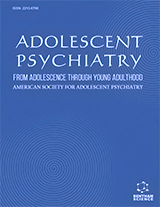Abstract
The shame-ethic, which emphasizes courage, disregard of personal safety and maintenance of ones social image, probably goes back to early human history. It tends to arise in social systems that view themselves as under attack and that lean toward combative, aggressive or even militaristic solutions. Cultures operating with this ethic place great importance on appearing strong and invincible; losing face and being shamed are to be avoided at all costs. In our era, the “Code of the Streets” is a modern version of this ethic, to which many inner city teenagers subscribe. This code values self-protection, self-aggrandizement, and the capacity to dominate others. It is fragile and must be continually maintained by actions that demean and victimize others. The behavior that characterizes many adolescents who come into treatment settings can be understood in terms of the shame ethnic. Treatment approaches for these young people need to take this dynamic into account and frame interventions in ways that support self esteem while suggesting pro-social behavioral alternatives. This article discusses ways that therapists can be effective with adolescents who subscribe to the shame ethic.
Keywords: Adolescents, psychotherapy, delinquency, shame, the code of the streets, ethic of Sparta, ethic of Athens, Code of the Street, self-aggrandizement, progressivism, permissiveness, social fabric, militaristic solutions, catastrophic defenses, intimidation
Adolescent Psychiatry
Title: The Shame Ethic in Adolescent Psychotherapy
Volume: 1 Issue: 1
Author(s): John E. Meeks
Affiliation:
Keywords: Adolescents, psychotherapy, delinquency, shame, the code of the streets, ethic of Sparta, ethic of Athens, Code of the Street, self-aggrandizement, progressivism, permissiveness, social fabric, militaristic solutions, catastrophic defenses, intimidation
Abstract: The shame-ethic, which emphasizes courage, disregard of personal safety and maintenance of ones social image, probably goes back to early human history. It tends to arise in social systems that view themselves as under attack and that lean toward combative, aggressive or even militaristic solutions. Cultures operating with this ethic place great importance on appearing strong and invincible; losing face and being shamed are to be avoided at all costs. In our era, the “Code of the Streets” is a modern version of this ethic, to which many inner city teenagers subscribe. This code values self-protection, self-aggrandizement, and the capacity to dominate others. It is fragile and must be continually maintained by actions that demean and victimize others. The behavior that characterizes many adolescents who come into treatment settings can be understood in terms of the shame ethnic. Treatment approaches for these young people need to take this dynamic into account and frame interventions in ways that support self esteem while suggesting pro-social behavioral alternatives. This article discusses ways that therapists can be effective with adolescents who subscribe to the shame ethic.
Export Options
About this article
Cite this article as:
E. Meeks John, The Shame Ethic in Adolescent Psychotherapy, Adolescent Psychiatry 2011; 1 (1) . https://dx.doi.org/10.2174/2210676611101010023
| DOI https://dx.doi.org/10.2174/2210676611101010023 |
Print ISSN 2210-6766 |
| Publisher Name Bentham Science Publisher |
Online ISSN 2210-6774 |
 15
15
- Author Guidelines
- Bentham Author Support Services (BASS)
- Graphical Abstracts
- Fabricating and Stating False Information
- Research Misconduct
- Post Publication Discussions and Corrections
- Publishing Ethics and Rectitude
- Increase Visibility of Your Article
- Archiving Policies
- Peer Review Workflow
- Order Your Article Before Print
- Promote Your Article
- Manuscript Transfer Facility
- Editorial Policies
- Allegations from Whistleblowers
- Announcements
Related Articles
-
Pilot Randomized Controlled Study of a Histamine Receptor Inverse Agonist in the Symptomatic Treatment of AD
Current Alzheimer Research Riboregulators and Metabolic Disorders: Getting Closer Towards Understanding the Pathogenesis of Diabetes Mellitus?
Current Molecular Medicine The Involvement of Metallothioneins in Mitochondrial Function and Disease
Current Protein & Peptide Science Tocilizumab in SARS-CoV-2 Patients with the Syndrome of Cytokine Storm: A Narrative Review
Reviews on Recent Clinical Trials Pyrazoline: A Promising Scaffold for the Inhibition of Monoamine Oxidase
Central Nervous System Agents in Medicinal Chemistry Interplay Between Nitric Oxide and Brain-Derived Neurotrophic Factor in Neuronal Plasticity
CNS & Neurological Disorders - Drug Targets Wide-Ranging Genomic Effects of Plasticisers and Related Compounds
Current Drug Metabolism An Update on NLRP3 Inflammasome Activation by Engineered Nanomaterials
Current Bionanotechnology (Discontinued) Microbial / Enzymatic Synthesis of Chiral Intermediates for Pharmaceuticals: Case Studies from BMS
Current Organic Chemistry Genetic and Bioinformatic Studies of Antidepressant Drug Therapeutic Efficacy and Toxicity: A Current Overview
Recent Patents on CNS Drug Discovery (Discontinued) Melatonin Effects on Plasmodium Life Cycle: New Avenues for Therapeutic Approach
Recent Patents on Endocrine, Metabolic & Immune Drug Discovery (Discontinued) What can Actigraphy Add to the Concept of Labschool Design in Clinical Trials?
Current Pharmaceutical Design The Underlying Role of Oxidative Stress in Neurodegeneration: A Mechanistic Review
CNS & Neurological Disorders - Drug Targets Role of TREM2 in Alzheimer's Disease and its Consequences on β- Amyloid, Tau and Neurofibrillary Tangles
Current Alzheimer Research Recent Progress in the Drug Development for the Treatment of Alzheimer’s Disease Especially on Inhibition of Amyloid-peptide Aggregation
Mini-Reviews in Medicinal Chemistry Curcumin: A Potential Neuroprotective Agent in Parkinson's Disease
Current Pharmaceutical Design Metal-Score as a Potential Non-Invasive Diagnostic Test for Alzheimer’s Disease
Current Alzheimer Research Significance of High Levels of Endogenous Melatonin in Mammalian Cerebrospinal Fluid and in the Central Nervous System
Current Neuropharmacology Confocal Laser Scanning Microscope, Raman Microscopy and Western Blotting to Evaluate Inflammatory Response after Myocardial Infarction
Current Vascular Pharmacology The L-Type Ca2+ Channel as a Therapeutic Target in Heart Disease
Current Medicinal Chemistry


























